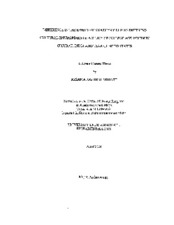| dc.creator | Brahmbhatt, Reshma Raj | |
| dc.date.accessioned | 2013-02-22T20:41:57Z | |
| dc.date.available | 2013-02-22T20:41:57Z | |
| dc.date.created | 2004 | |
| dc.date.issued | 2013-02-22 | |
| dc.identifier.uri | https://hdl.handle.net/1969.1/ETD-TAMU-2004-Fellows-Thesis-B73 | |
| dc.description | Due to the character of the original source materials and the nature of batch digitization, quality control issues may be present in this document. Please report any quality issues you encounter to digital@library.tamu.edu, referencing the URI of the item. | en |
| dc.description | Includes bibliographical references (leaves 91-94). | en |
| dc.description.abstract | This thesis is primarily concerned with the effect of a grassroots spiritual movement on the lives of youth in India and the United States. Swadhyay is a movement that began in India in the 1940s under the leadership of Shri Pandurang Shastri Athavale. The Swadhyay philosophy includes beliefs based in the Vedic tradition. Swadhyay also makes use of unconventional methods of devotion in the form of prayogs or experiments. In addition to explaining the main beliefs of Swadhyay, this thesis also discusses the youth group portion of Swadhyay, Divine Brain Trust (DBT). My research consists of two sections: field work and scholarly research. I traveled to India for three months in the summer of 2003 to interview and observe with college-age youth. Once I returned to the United States, I complemented my Indian research with the same types of activities and interviews with Swadhyayee college youth in the United States over the fall and winter of 2003. The compiled data was then analyzed for differences in the youth's perceptions of Swadhyay as well as the nature of the background environments for the two samples. In addition to the fieldwork, I have also consulted literature research on both Swadhyay and the experiences of second generation South Asian youth in America at large. The latter research was done to place my specific findings into larger context. My analysis showed that there is a difference in the way Swadhyay is perceived by the young Swadhyayees in the two countries. Their background environments (including personal and family information) were also found to be different based on the data I collected. This confirms an association between the two factors, but does not imply a causal relationship. The comparison of the experiences of the American respondents and second generation South Asians at large shows many common features, including religion as a factor in identity and assimilation. | en |
| dc.format.medium | electronic | en |
| dc.format.mimetype | application/pdf | |
| dc.language.iso | en_US | |
| dc.publisher | Texas A&M University | |
| dc.rights | This thesis was part of a retrospective digitization project authorized by the Texas A&M University Libraries in 2008. Copyright remains vested with the author(s). It is the user's responsibility to secure permission from the copyright holder(s) for re-use of the work beyond the provision of Fair Use. | en |
| dc.subject | anthropology. | en |
| dc.subject | Major anthropology. | en |
| dc.title | Difference in the effect of Swadhyay due to differing cultural environments: a study of college age youth in Gujurat, India and Texas, United States | en |
| thesis.degree.department | anthropology | en |
| thesis.degree.discipline | anthropology | en |
| thesis.degree.name | Fellows Thesis | en |
| thesis.degree.level | Undergraduate | en |
| dc.type.genre | thesis | en |
| dc.type.material | text | en |
| dc.format.digitalOrigin | reformatted digital | en |


